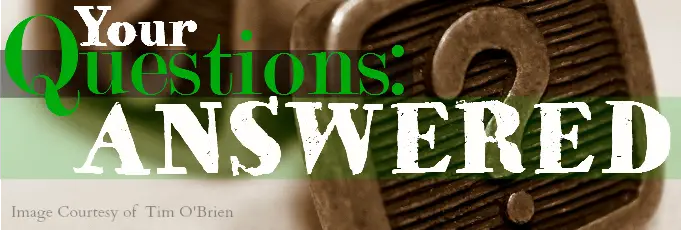Back before Kingdom Pen’s hiatus, we had a feature called “Your Questions: Answered” where we would answer writing related questions sent in by KP subscribers. This was a feature for the eMag, but since the magazine won’t be back until December, we decided to bring this to the website.
Do you have a question about writing? Email us at kingdompenmag@gmail.com, using the subject line, “Question For The Panel”. Once a month, we will compile your questions, answer them to the best of our ability, and then post the Q/A here on Kingdompen.org.
Here are a couple recent questions we received:
Question:
I am a young writer who very recently subscribed. I have a question about writing. I write fiction. Sometimes it is fantasy, and sometimes it is more in the style and time period of Charles Dickens and other such famous authors. But regardless of what kind of story I am writing, I invariably run into the same problem halfway through my story. I become so deeply absorbed in, acquainted, if you will, with the main character that I lose sight of who he or she is for a time. I usually end up going back and reading all their other previous scenes, and that helps tremendously, but I would be very grateful for any advice you can offer. Is this normal? Is there any way to avoid it?
– Kate
Answer:
Hello Kate!
Write down everything you know about your MC at the start. List all of their idiosyncrasies and personality quirks. List all the phrases they like to use, list habits or unique body language tendencies. What motivates them? What are their fears? What makes them happy? Sad? Embarrassed? Really get to know your main character before you start writing.For more on this, I recommend you read K.M. Weiland’s free e-book, Crafting Unforgettable Characters.
– Reagan Ramm
Question:
Generally speaking, what is the maximum number of characters recommended to put in a novel? Would this change depending upon the author’s ability to keep them all straight and maintain their individual natures, while still weaving a good, tight story?– Kate–
Answer:
With main characters, you don’t really want to have more than four to five characters. Start with your protagonist and antagonist, and maybe add a couple more, but a lot of the time, other “main” characters can really be more like secondary characters, so the line can be somewhat blurred at times. But you definitely don’t want more than five, and even five characters can be pushing it at times, unless it’s a trilogy of door-stopper fantasy novels or something like that.
Secondary characters represent a broad category since it can be anything from a faithful sidekick to a minor character who only shows up once or twice. So putting a strict limit on this is tough. There are some things to keep in mind though when assessing the number of characters. First, keep a careful eye out for redundant characters that can either be cut or combined with other characters without much harm done to the overall story. Having done this myself, I know that it can be painful to get rid of characters like this, but it is also necessary. So keep an eye out when adding a new character to see if he can just be combined with another one, or if he’s really necessary. Second, one of the best ways to test out if you have too many characters is to send your story out to some beta readers who you know will give helpful feedback on the story and see what they think. If several people are reporting back that they were confused by the number of characters, that’s a pretty good indicator that there is too many. But on the flip side, if you hear no complaints, it’s probably fine. So the number of characters in this category can vary a lot so that we can only stick to guidelines. But there is a limit.
Finally, the last category is background characters, or nameless characters that exist but are mostly defined by the groups they’re in. This would be the random street workers that your character might walk by, or the entire army of nameless-characters that is present in a fantasy work. These characters don’t get any “speaking lines” so to speak, but are present to make the rest of the world believable. With these characters, you can pretty much have as many as you want, provided they’re fulfilling their purpose.
Overall, giving each of your characters a distinctive personality does a lot to help the reader with possible character-confusion. Nine characters with distinctive personalities are easier to tell apart than three characters who all have blurred or undefined personalities. So, unfortunately, there is no clear limit for characters. But giving each character distinctive personalities, keeping an eye out for minor characters that can be cut, and relying on beta readers to make sure you’re not overdoing it is a great way to work around this problem.


